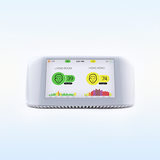Ductless Chimney: Benefits, Applications, Installation & Drawbacks
Welcome to the world of modern kitchen ventilation! If you're looking to upgrade your cooking space and say goodbye to lingering odours and grease; ductless chimneys might just be the answer you've been searching for. These sleek and efficient appliances are revolutionizing the way we think about kitchen air quality. Let's look into the benefits, applications, installation process, drawbacks, maintenance tips, and more when it comes to ductless chimneys.
Benefits of using a ductless chimney
Ductless chimneys offer a range of benefits that make them a popular choice for many households.
- One of the main advantages is their flexibility in installation, as they do not require ductwork like traditional chimneys. This makes them ideal for apartments or homes where adding ducts may be challenging.
- Another benefit of using a ductless chimney is its energy efficiency. By eliminating the need for ducts, these systems can help reduce energy loss and lower utility bills.
- Moreover, ductless chimneys are known for their effective odour and smoke removal capabilities. They efficiently filter out cooking fumes and odours, keeping your kitchen fresh and clean.
- Ductless chimneys like KichPure also eliminate gases like SOx, NOx, VOCs, Dust, Bacteria, & Viruses apart from eliminating bad odour & smoke with the help of powerful airflow.
- With various design options available, these chimneys can also enhance the aesthetic appeal of your kitchen while maintaining functionality.
The benefits of using a ductless chimney extend beyond just practicality to include convenience, cost-effectiveness, and improved indoor air quality.
Applications of ductless chimneys
Ductless chimneys have a wide range of applications in various settings. They are commonly used in apartments, condominiums, and homes where traditional ductwork installation is not feasible or cost-effective.
Due to their flexibility and ease of installation, ductless chimneys are also popular choices for kitchen renovations and remodels.
In commercial spaces such as restaurants, cafes, and food trucks, ductless chimneys provide efficient smoke extraction without the need for extensive construction work. Their compact size makes them ideal for small kitchens with limited space.
Additionally, ductless chimneys can be easily installed in outdoor cooking areas like patios or barbecue stations.
For homeowners looking to add a stylish focal point to their kitchen while improving indoor air quality, ductless chimneys offer a practical solution. With different designs and finishes available on the market, these versatile appliances complement various interior styles from modern to traditional, seamlessly.
Installation process of ductless chimneys
When it comes to installing a ductless chimney, the process is relatively straightforward. First and foremost, ensure that you have all the necessary tools and equipment on hand before starting the installation.
Begin by carefully following the manufacturer's instructions provided with the ductless chimney. It's crucial to mount the chimney at an appropriate height above your cooktop for optimal performance.
Next, secure the mounting bracket onto the wall using sturdy screws to support the weight of the chimney. Make sure that it is securely attached before proceeding further.
After mounting, connect any required electrical wiring according to local regulations and safety standards. Test that the chimney is functioning correctly before completing the installation process.
Double-check all connections and ensure everything is properly secured before enjoying a smoke-free kitchen environment with your newly installed ductless chimney.
Drawbacks of ductless chimneys
While ductless chimneys offer many benefits, there are some drawbacks to consider. One of the main disadvantages is that ductless chimneys may not be as effective at removing smoke and odours compared to their ducted counterparts.
Since they do not vent outside, the air is recirculated back into the kitchen after passing through filters, which may not fully eliminate all cooking fumes.
Note: KichPure is a heavy-duty machine of 27 kg with a powerful suction motor, which is designed for commercial kitchens like, restaurants. It is capable enough to absorb any amount of bad odour & smoke effortlessly. Its maintenance is easy & needs cleaning & service after 4-5 months as generally required in traditional chimneys. Apart from all the benefits, KichPure purifies the air by removing pollutants before recirculating the air. Learn More
Additionally, ductless chimneys require regular maintenance and filter replacements to ensure optimal performance. The filters can get clogged with grease and dirt over time, reducing the efficiency of the chimney. This means more frequent cleaning and upkeep compared to ducted systems.
Another drawback is that ductless chimneys can be noisier than ducted ones due to the fan needed to circulate air through the filters. This noise level might be a concern for some users who prefer a quieter kitchen environment during cooking sessions.
Furthermore, installation costs of ductless chimneys can sometimes be higher than those of traditional ducted models since they involve additional components like carbon filters for air purification.
Tips for maintaining and cleaning a ductless chimney
When it comes to maintaining and cleaning your ductless chimney, regular upkeep is key to ensuring its efficiency. One important tip is to clean the filters regularly, either by washing or replacing them as recommended by the manufacturer. This helps in preventing grease buildup and ensures proper airflow.
Additionally, make sure to wipe down the exterior of the chimney with a damp cloth and mild detergent to remove any accumulated grime or residue. Pay attention to any visible dirt or oil spots that may affect its overall performance.
It's also essential to schedule professional servicing at least once a year to inspect for any potential issues and ensure optimal functioning. Regular maintenance not only prolongs the lifespan of your ductless chimney but also improves air quality in your kitchen.
By following these simple tips, you can keep your ductless chimney running smoothly and efficiently for years to come.
Ducted vs ductless chimney
When it comes to choosing between a ducted and ductless chimney for your kitchen, there are key differences to consider. A ducted chimney requires ductwork to expel smoke and odours outside, while a ductless chimney uses filters to clean the air before recirculating it back into the room.
Ducted chimneys are more effective at removing smoke and grease since they vent outside, but they require installation near an exterior wall. On the other hand, ductless chimneys offer flexibility in placement since they don't need access to an external vent.
In terms of maintenance, ducted chimneys may require occasional cleaning of the exhaust pipes, while ductless models need regular filter replacement or cleaning. Consider your kitchen layout, cooking habits, and ventilation options when deciding between a ducted or ductless chimney that best suits your needs.
Which one should you go for?
When deciding between a ducted and ductless chimney, consider your kitchen setup. Ducted chimneys require ventilation ducts while ductless ones don't. If you can't install ductwork, go for a ductless option.
Ducted chimneys are more effective at removing smoke and odours since they vent outside. However, if you want easy installation and flexibility in placement, a ductless chimney might be the way to go.
Think about maintenance too; with a ducted chimney, you'll need to clean the filters regularly while a ductless one requires frequent filter replacements.
Budget is also important; initially, a ductless chimney may cost less but factor in ongoing filter costs. Consider noise levels as well; some find that ducted chimneys are quieter than their counterparts.
Weigh these factors against your needs and preferences to determine which type of chimney suits your kitchen best.
Conclusion
Ductless chimneys offer a convenient and efficient solution for kitchens without traditional ductwork. They come with various benefits such as easy installation, versatility in applications, and cost-effectiveness. However, it's essential to consider their drawbacks like regular maintenance requirements and limited effectiveness in large kitchen spaces.
When deciding between a ducted or ductless chimney, the choice ultimately depends on your specific needs and budget constraints. While ducted chimneys are known for their powerful suction capabilities, ductless options provide flexibility in installation locations.
Understanding the benefits, applications, installation process, drawbacks, and maintenance tips of a ductless chimney will help you make an informed decision when upgrading your kitchen ventilation system.



















